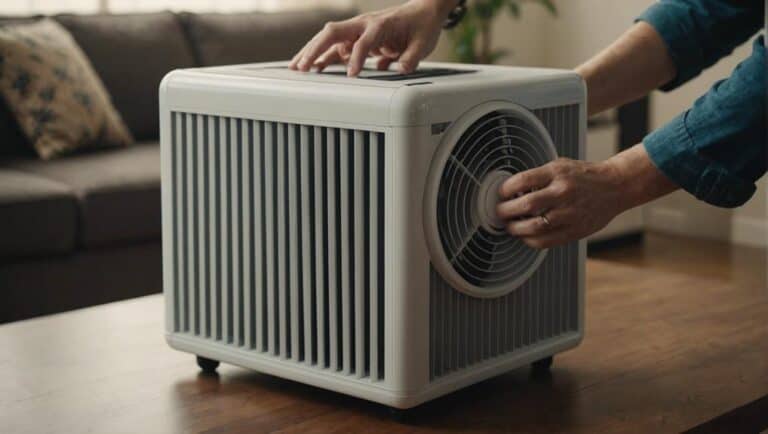How to Get Rid of Cat Dandruff: Effective Solutions for a Healthy Coat
Cat dandruff can be as much of a concern for our feline friends as it is for us. Those pesky white flakes are not only a cosmetic issue but could also be a sign of health problems in our pets. Understanding why our cats are dealing with dandruff is the first step in helping them get relief. We know that dandruff can be a marker for a variety of underlying issues, ranging from dry skin to more complex skin conditions.

Taking action against cat dandruff involves a mix of approaches, including grooming, diet improvements, and environmental adjustments. It’s essential for us to be thorough in these measures, ensuring that our cats’ skin receives the right balance of nutrients and care. In cases where dandruff persists or is severe, it is crucial to seek professional care and treatments to address the issue effectively and prevent any potential complications.
Key Takeaways
- Identifying dandruff is key to providing the right care for our cats.
- We should combine regular grooming with a balanced diet to manage dandruff.
- Persistent dandruff may require a vet’s intervention.
Understanding Cat Dandruff
Cat dandruff is a common issue that can affect any breed. It’s crucial to understand its causes and symptoms to provide the best care for our feline friends.
Causes of Cat Dandruff
Dandruff in cats arises from the shedding of dead skin cells, which accumulate as flaky, white particles in their fur. One significant cause is dry skin, often exacerbated by environmental factors such as low humidity or exposure to intense heat or cold. In some cases, allergies can lead to increased dander, resulting in skin irritation and dandruff. Seborrhea, a condition that causes the sebaceous glands to produce excess sebum, may also be the culprit.
- Dietary Deficiency: Lack of essential nutrients can lead to skin issues, including dandruff.
- Parasites: Fleas or mites can irritate the skin, causing flakes and itching.
- Medical Conditions: Certain medical issues such as diabetes or hyperthyroidism can manifest as skin problems, including dandruff.
We should address each of these potential causes to help our cats maintain healthy skin.
Symptoms and Diagnosis
The diagnosis of cat dandruff starts by identifying the symptoms. We may notice that our cat’s coat has flaky white specks, or they might be grooming themselves more due to itchiness. In some cases, dandruff is accompanied by noticeable skin irritation or bald patches. Inflammation could also be present if the cat is persistently scratching certain areas.
To confirm the diagnosis, a vet will examine our cat’s skin and consider the following:
- Physical Examination: Close inspection of the fur and skin for signs of dandruff and its extent.
- Medical History: Discussion of our cat’s overall health, diet, and any recent changes in behavior or environment.
If allergies are suspected to be the cause, further tests might be required to pinpoint the allergen. Identifying and understanding the precise cause of cat dandruff is pivotal for successful treatment and relief.
Preventive Measures

Preventive measures are essential in managing cat dandruff effectively. We’ll focus on proper nutrition, regular grooming practices, and maintaining an optimal environment for our feline friends to reduce the occurrence of dandruff.
Proper Nutrition
Ensuring our cats receive a diet rich in essential nutrients is pivotal for skin health. We recommend feeding them high-quality food that has balanced omega-3 fatty acids, which are known to support a healthy coat. Increasing the amount of fish-based foods or incorporating omega-3 supplements can be beneficial. Providing ample hydration is also crucial as it helps moisturize the skin from the inside out.
Regular Grooming
Regular grooming is another key measure. We advocate for the use of a cat-specific brush or comb to help remove dead skin cells and distribute the cat’s natural oils across their coat. Be sure to brush gently to avoid discomfort and reinforce this as a positive experience for your cat. This not only promotes a healthier coat but also strengthens the bond between us and our cats.
Environmental Control
Lastly, controlling the environment can greatly impact the presence of cat dandruff. We suggest monitoring the humidity levels in our homes, as a too dry environment may contribute to dandruff. Using a humidifier can add necessary moisture to the air, which can help to keep our cat’s skin hydrated. Preventing overly dry conditions will support the overall well-being of our cat’s skin and coat.
Dietary Considerations

When it comes to combatting cat dandruff, we must ensure our feline friends are receiving a balanced diet rich in essential nutrients. The right diet can help nourish their skin and reduce flakiness.
Essential Fatty Acids
For healthy skin and coat, adding essential fatty acids to our cat’s diet is key. Specifically, a balance of omega-3 and omega-6 fatty acids is crucial. These can be found in high-quality cat foods that list fish oils among their ingredients. Additionally, supplements with omega-3 fatty acids, like those derived from fish oil, can provide the necessary nutrients if their current diet is lacking.
- Sources of Omega-3s: Fish oils, flax seeds
- Sources of Omega-6s: Poultry, eggs
Hydration and Wet Food
Hydration plays a vital role in maintaining a cat’s healthy skin. Wet food is an excellent way to increase our cat’s water intake, especially for those that are not keen on drinking water regularly. With higher moisture content, wet food helps ensure our cats are adequately hydrated, which in turn can alleviate dry skin and dandruff.
- Benefits of Wet Food: Increased hydration, better skin health
- Supplementing with Water: Always have fresh water available
Including these dietary considerations can be an effective strategy in managing and reducing cat dandruff, ensuring our cats are as healthy and comfortable as possible.
Professional Care and Treatments
In addressing cat dandruff, sometimes the expertise of a veterinarian is indispensable, especially when dealing with persistent flakes or underlying health issues. We can explore when professional care is necessary and what medical treatments are available.
When to see a Veterinarian
We recommend consulting a vet immediately if cat dandruff is persistent or if it’s accompanied by symptoms such as itching, redness, hair loss, or changes in behavior, as it might indicate a more serious health issue. External parasites like fleas or mites, or hormonal issues such as hyperthyroidism could be at the root of the problem. A thorough examination by a veterinarian can reveal if the dandruff is due to allergens or the presence of external parasites.
Available Medical Treatments
Once a vet has diagnosed the cause of your cat’s dandruff, they may prescribe various treatments to address the condition. Medicated shampoos are often used to treat issues on the skin directly, while topical creams might soothe irritation and inflammation. In cases where an allergen or a parasite is responsible, specific medications or anti-parasitic treatments are necessary. For systemic or hormonal issues, oral medications or other forms of treatment might be recommended by your vet to ensure your cat’s relief and recovery.
Home Remedies and Care
In tackling cat dandruff, we focus on home remedies and proper care techniques that can contribute to the overall health of our feline friends’ skin and fur. Below are specific steps we can take through bathing, moisturizing, and alternative treatments.
Bathing Techniques
When we bathe our cats, it’s crucial to use a gentle, cat-specific shampoo. Bathing can help address dandruff by removing loose flakes and soothing the skin. However, bathing your cat too frequently can strip their skin of natural oils, so it’s recommended to limit baths to once every couple of months or as advised by a vet.
- Frequency: Once every 1-2 months, or as needed.
- Products: Choose a mild shampoo formulated for cats.
Moisturizing and Supplements
Proper moisturizing and supplementation can greatly improve our cats’ skin condition. Adding omega-3 fatty acid supplements to their diet can promote healthier skin. Additionally, topical treatments like a small amount of coconut oil massaged into the coat may provide extra moisture, but we must always ensure that any product used is safe for cats.
- Diet: Introduce omega-3 fatty acid supplements to support skin health.
- Topical: Apply coconut oil sparingly to avoid excessive licking.
Alternative Treatments
There are home remedies that may assist with dandruff without resorting to medical treatments. Regular grooming with a suitable brush aids in distributing natural skin oils and removing debris. Beyond regular grooming, fish oil supplements may be beneficial due to their anti-inflammatory properties, which can help improve skin conditions. Before trying any alternative treatments, it’s best practice to consult with a vet to ensure the safety and suitability for your cat.
- Grooming: Brush your cat regularly with an appropriate cat brush.
- Supplements: Consider fish oil supplements for their potential skin benefits.
Managing Other Factors
Before diving into specific strategies to reduce cat dandruff, it’s critical to look at the overall health and environment of your cat. Factors such as maintaining a healthy weight, minimizing stress, and controlling allergies and parasites play an essential role in the comfort and skin health of our feline friends.
Weight Management
Obesity can exacerbate skin problems in cats, including dandruff. Overweight cats may also struggle with grooming effectively, leading to increased dead skin and fur buildup. For healthy weight maintenance, we should ensure our cats are fed a balanced diet and receive adequate exercise. This can not only reduce the risk of arthritis—which can impede a cat’s ability to groom—but also improve skin condition by promoting better blood flow.
Stress Reduction
Stress can significantly impact the health of our cats, manifesting in both behavioral changes and physical symptoms like increased shedding and dandruff. To reduce stress, it’s crucial we provide a stable environment, full of safe spaces for retreat. We should also maintain routine and offer mental stimulation through play to keep our cats calm and balanced.
Allergy and Parasite Control
Allergies in cats can cause itchy skin and dandruff. We must be vigilant about potential allergens in the home and consult a veterinarian for allergy testing if necessary. Parasites such as fleas, mites, and lice also play a significant role in skin health. Regular preventive treatments are vital. For instance, if we observe flea dirt in our cat’s coat, it’s imperative to tackle the issue immediately with appropriate flea control products. Additionally, parasitic infections like cheyletiella can cause significant scaling and should be addressed promptly through veterinary care.
Assessing Environmental Impact
When managing cat dandruff, it’s crucial to consider the surroundings where our cats spend their time, as environmental factors can directly influence skin health.
Indoor vs Outdoor
Indoor cats often live in controlled climates, yet indoor heating can reduce humidity, leading to dry skin. Conversely, outdoor cats are exposed to the natural weather elements, which can either benefit or exacerbate skin conditions depending on the environment. A dry environment outside, for instance, can mirror the dehydrating effects of indoor heating. It’s important to ensure that indoor environments have adequate humidity, potentially by using a humidifier, and outdoor cats have access to shelter. Incorporating wet food in our cat’s diet can help with hydration from within.
Seasonal Changes
During winter, colder temperatures and low humidity both indoors and out can dry out cat skin, increasing the likelihood of dandruff. We should be mindful of these seasonal changes as they may necessitate modifications in our cat’s care, such as increased grooming frequency to distribute natural oils in their coat more effectively. Maintaining consistent humidity levels in the home is beneficial, as large fluctuations may irritate the skin. Monitoring weather patterns and adjusting care for our cats accordingly helps minimize the risk of dandruff.
Understanding Special Needs
When tackling cat dandruff, we must consider the particular needs of older cats and those with underlying health conditions. These factors can influence skin health and necessitate specific care approaches.
Caring for Older Cats
As cats age, their skin may become more sensitive and prone to dryness, leading to dandruff. We recognize that older cats often require gentler grooming methods. Regular brushing with a soft brush helps distribute natural oils and remove loose fur without causing discomfort. If they suffer from arthritis, it’s crucial to handle them carefully to avoid pain during grooming.
Addressing Underlying Health Issues
Dandruff may be symptomatic of underlying health issues that we should address. Hormonal issues like hyperthyroidism can affect skin condition, contributing to dandruff. Monitoring and managing these conditions under veterinary guidance is vital. Stress, too, can exacerbate skin problems, and we often find that reducing stress with environmental enrichment can help improve skin and coat health. To support cats with health issues, consider the following:
- Regular Veterinary Checkups: Early detection and treatment of conditions like hyperthyroidism can prevent complications.
- Appropriate Medication: If a hormonal imbalance is identified, medications can regulate the condition, potentially alleviating skin issues like dandruff.
- Stress Reduction: Creating a calming environment and providing plenty of play can mitigate stress-related skin issues.
By understanding and addressing these special needs, we can help our feline friends maintain a healthier coat and skin.
Conclusion
We’ve explored several practical approaches to managing cat dandruff. While dandruff can be a common issue, our in-depth look has provided us with beneficial insights to tackle it effectively. We’ve learned that incorporating a well-balanced diet rich in omega-3 fatty acids can improve our cats’ skin health, which could potentially reduce dandruff. It’s also clear that regular grooming and proper hydration are key in maintaining a healthy coat.
Below is a quick checklist of remedies to keep our feline friends flake-free:
- Improve Diet: Ensure they’re getting high-quality food with essential fatty acids.
- Hydration: Always provide plenty of fresh water.
- Grooming: Brush their fur regularly to remove loose flakes and stimulate oil production.
- Supplements: Consider fish oil or other vet-recommended supplements.
- Vet Care: Always consult with a vet for persistent dandruff issues.
We must remember to stay consistent with these remedies and be observant of any changes in our cats’ skin and coat. By doing so, we can maintain their coat’s health with confidence and knowledge, ensuring they are comfortable and well-cared for. Should we encounter persistent or severe dandruff, seeking veterinary advice is crucial to rule out any underlying health concerns. With the right care, we can help our cats have a dandruff-free life.





